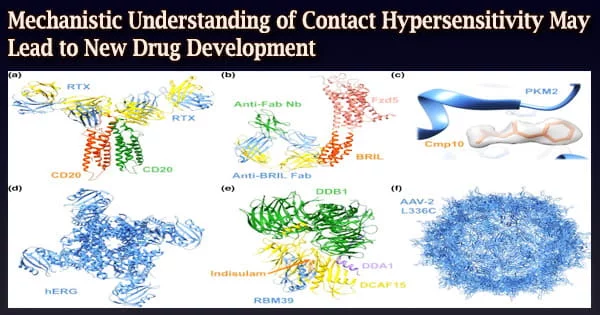A scratchy rash that appears when specific substances come into direct touch with the skin is known as contact hypersensitivity (CHS), often referred to as contact dermatitis. It usually follows an allergic reaction and might make patients feel uneasy.
Contact dermatitis can cause itchy rashes to appear and can be brought on by common items like perfumes, cleaning products, and accessories. Despite being widespread, the underlying physiological mechanisms that cause CHS are still unknown.
The specific molecular pathways that cause CHS have just been clarified by a research team from Fujita Health University School of Medicine in Japan. The team had previously demonstrated that genetic changes in the interleukin (IL)36RN gene, which is in charge of producing the interleukin-36 receptor antagonist protein (also known as IL-36Ra), may lead to greater CHS.
Additionally, they noticed that the mutations boosted the production of neutrophil extracellular traps (NETs), which are protein and DNA meshes that neutrophils release to catch infections. Uncertainty persisted on the immunological pathophysiology of NETs in CHS.
The research team has already identified correlations between IL-36Ra and wound healing as well as psoriatic lesions on two separate occasions. The same team has now been able to delve deeply to investigate the underlying systems in greater detail.
Our study is the first to suggest the involvement of NETs in the immune responses in CHS. All our findings collectively indicate that the blockade of NET formation by Cl-amidine may be a potential treatment approach for allergic contact dermatitis.
Dr. Yurie Hasegawa
Their study was recently published in Scientific Reports (published on Aug 4, 2022) and shows that NETs could be a potential therapeutic target for CHS. The lead author, Dr. Yurie Hasegawa, a graduate student at the Fujita Health University School of Medicine, along with co-authors Dr. Yohei Iwata and Prof. Kazumitsu Sugiura, together demonstrated that NETs play a prominent role in the CHS response in the presence of a high number of inflammatory cells like CD4+ and CD8+ T-cells.
“NETs may also exacerbate immune reactions in CHS. Therefore, the inhibition of NET formation may be a new therapeutic strategy in contact dermatitis,” explains Dr. Hasegawa about the rationale of their study.
The scientists assessed NET development in wild-type and Il36rn-/- mutant mice in response to CHS-responsive CD4+ and CD8+ T cells to verify their theory. The number of invading inflammatory cells and the area of NETs decreased in both the mutant and wild-type mice when they evaluated the effects of Cl-amidine on the CHS response.
The mutant animals had much more macrophages and CD4+ and CD8+ T cells than the wild-type mice, according to histopathology and cell tests. Additionally, they showed increased levels of inflammatory cytokines including IL-1, CXCL1, CXCL2, IL-17A, tumor necrosis factor, and IL-36.
IFN- and CXCL1 levels between mutant animals treated with Cl-amidine and untreated wild-type mice were noticeably different, but inflammatory cytokines were not. They next demonstrated that the mutant mice have more NETs in their ear tissues than the wild-type mice using immunofluorescence labeling.
Cl-amidine, an inhibitor that prevents the creation of NETs, reduced the CHS response in mice, indicating that NETs might be a possible treatment target for CHS.
The team is excited to continue investigating the relationships between NET creation and CHS treatment after being so pleased with their findings.
Dr. Hasegawa explains, “Our study is the first to suggest the involvement of NETs in the immune responses in CHS. All our findings collectively indicate that the blockade of NET formation by Cl-amidine may be a potential treatment approach for allergic contact dermatitis.”
We can only hope that their discovery will make it easier to create cutting-edge therapeutics for the secure and efficient management of contact dermatitis.





